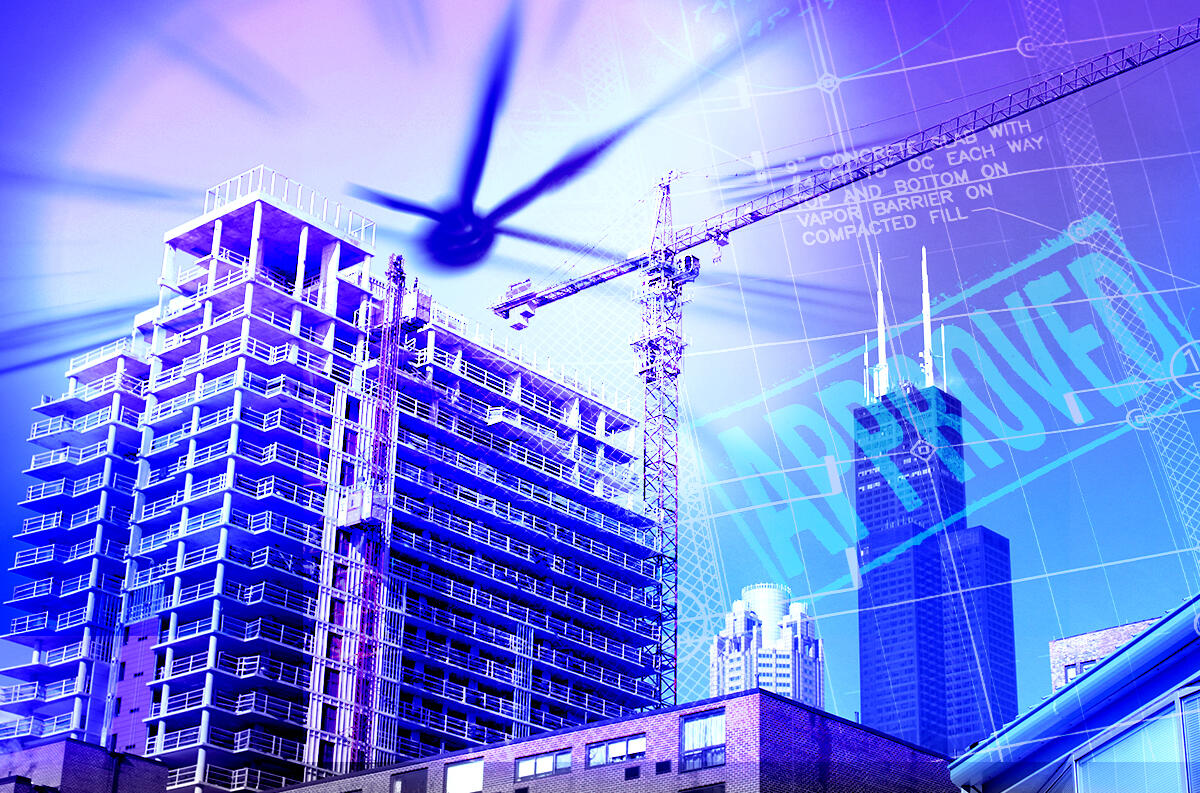Developers seeking to alter Chicago’s skyline are shucking some layers of bureaucracy in the building permit review process when given the option.
It’s a big change from a few years ago.
The trend has been spurred by a new program introduced by the city and lauded by real estate players as a way to save time, money and showcase confidence in their projects to lenders.
When developers attempt to add to the skyline they must apply for and receive building permits before a shovel can go into the ground — a process that can make lenders nervous and foul up sales plans should the approval period take too long.
To improve review times, in 2016 Chicago officials unveiled a review method for moderate to complex construction projects, which can include high-rises, non-residential buildings exceeding 150,00 square feet and residential projects with 50 or more dwelling units.
Called Direct Developer Services or DDS, the program offers an alternative to the traditional city-led process by putting much of it in private hands. It lets developers negotiate pricing and review times directly with any of the seven city-approved architecture and engineering firms, rather than traverse the city-managed bid review process.
Now, the numbers are in — developers have picked private over public.
Chicago’s first full year offering the outsourced permit reviews was 2017, and they outnumbered traditional permit review applications 17 to one, according to an analysis by The Real Deal using online permit data. The following year, the ratio fell to 10 to one, but climbed to its all time high in 2019 to 30.5 to one.
For 2020, 2021 and so far through 2022, the number of permits sought via the new review system far exceeded demand for the old.
In total, the city has issued more than 5,900 permits through the Direct Developer Services since its inception compared with about 650 through the older route for the same time period. According to the department of buildings, almost all privately funded projects required to use developer services to receive a permit to choose this new program.
Why have developers steered into this new review route?
Exactly how much faster approvals tend to be issued through the new program than the city-led method is hard to pin down — approved permit data is available online, but comparing permit processing times across different review routes available on Chicago’s open data portal would be inaccurate according to the department.
Yet developers, architects, expeditors and everyone in between agrees the Direct Developer System moves permits quicker.
“For very large, complicated jobs I think the DDS model is a bit more efficient and the reason is you’re cutting out that middleman,” Todd Wendell, vice president of architecture and design for Chicago’s Magellan Development Group, said.
The time savings come at the front end of the process, said Ashish Shah, a licensed permit expeditor and CEO of Cornerstone Permit Co, based in Chicago. The initial review process, which consists of studying drawings and finding a reviewer, can take two to three days through the DDS route versus three to four weeks with the traditional route.
“That’s where the main difference and the time savings is,” he said. “The front end is where you save some time and that’s something that the city put together, knowing that.”
The city’s Department of Buildings started the Direct Developer Services program to supplement the traditional process based on input from department employees and real estate industry professionals, according to the department. It was one of several changes implemented under the former commissioner of buildings Judy Frydland. Frydland did not return an interview request.
The rollout of Direct Developer Services coincided with increased development activity from 2015 to 2018, with the rise coming after a slowdown caused by the 2008 recession. It played a role in easing the permitting process as Chicago’s development reboot got underway. Most recent projects still using the traditional process are government-funded or for the University of Chicago, according to the department.
The number of permits issued for large projects so far this year, 1,098, already outpaced the 981 large-project permits issued last year, a sign of development activity picking back up after a slowdown earlier in the pandemic. In 2019, there were 1,134 large project permits issued and 2020 had 1,152.
A more efficient permit review process makes a wealth of downstream impacts as well, including help with financing and aligning completion schedules with seasonal market fluctuations.
Kathy Anderson of mortgage lender Progress Capital said that efficiency is important, given how critical the timeline in financing is.
Construction loan windows are typically 38 months on average, during which the developer is allowed to use loan money earmarked for their project. Interest doesn’t accrue until the developer advances money from the loan (i.e., takes it out of the bank for work on the project). The bank can’t use that money marked elsewhere in the meantime, even if the developer encounters delays during the loan’s initial window.
The bank can’t make money in this scenario that Anderson equated to a lengthy permit approval process to giving someone an hour to run a race, but only letting them step off the start line half-an-hour in.
So efforts to expedite permits are “added security to the bank that this project is a go, versus a maybe,” she said.
It also builds confidence with lenders that the developer will be able to get the work done and pay back the bank. Permits tied up in reviews make lenders nervous, according to Anderson. Shah also noted that some lenders require a permit to be issued before they can release funds.
A quicker review process also helps developers avoid getting thrown off their timing of the market, so they aren’t delivering a new apartment complex in the middle of winter when most people are looking for a new place to move between May and September.
Read more


